Welcome to our free classical music site

Do you write about classical music? Are you a blogger? Want to team up with Classical Connect? Send us a message, let's talk!

Do you write about classical music? Are you a blogger? Want to team up with Classical Connect? Send us a message, let's talk!
July 1, 2019. Gluck and more. We should’ve written about Gustav Mahler as his birthday falls on next Sunday, July 7th: we are good internationalists and start our week on Monday, so it would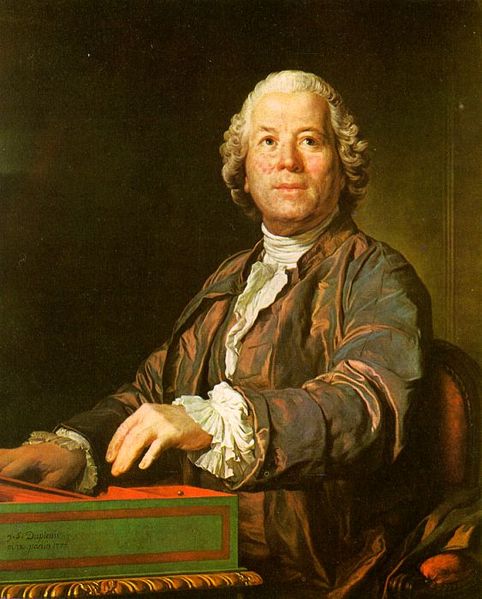 be still this week for us; however, we’ll do it in our next entry. In the meantime, we’ll remember Christoph Willibald Gluck, who was born on July 2nd of 1714 in Erasbach, a small town in Upper Palatinate, now in Bavaria. Here’s what we wrote about Gluck on his 203rd birthday anniversary; we ended our entry with Gluck settling in Vienna in 1751: “The most productive, but also the most disappointing period of his life was still ahead of him.” Gluck’s early years in Vienna were quite promising: he became the Kapellmeister to Prince Joseph of Saxe-Hildburghausen. He also taught music to Maria Antonia Habsburg, the younger daughter of Empress Maria Theresa and, as Marie Antoinette, the future queen of France. Gluck was also composing; some of his operas were performed at the Prince’s palace theater for the Emperor’s family. In 1761 Prince Joseph disbanded his orchestra and Gluck’s permanent employment was gone. This was the period during which Gluck was thinking about changing the opera. He wanted it to develop more naturally, without convoluted plots of the Italian opera seria. He didn’t like repetitions, so numerous in the baroque opera, its “da capo” arias, in which the third part duplicates the first. He wanted to get rid of the improvisations, the staple of the famous castrati. Overall, to think of it, what Gluck wanted to accomplish around 1760 was very much what Richard Wagner would do a century later. Gluck didn’t just muse about these things, he put them in writing (together with his librettist, Ranieri de' Calzabigi) in the published dedication and the preface to his opera Alceste. In that he also reminds us of Wagner who wrote extensively about the opera.
be still this week for us; however, we’ll do it in our next entry. In the meantime, we’ll remember Christoph Willibald Gluck, who was born on July 2nd of 1714 in Erasbach, a small town in Upper Palatinate, now in Bavaria. Here’s what we wrote about Gluck on his 203rd birthday anniversary; we ended our entry with Gluck settling in Vienna in 1751: “The most productive, but also the most disappointing period of his life was still ahead of him.” Gluck’s early years in Vienna were quite promising: he became the Kapellmeister to Prince Joseph of Saxe-Hildburghausen. He also taught music to Maria Antonia Habsburg, the younger daughter of Empress Maria Theresa and, as Marie Antoinette, the future queen of France. Gluck was also composing; some of his operas were performed at the Prince’s palace theater for the Emperor’s family. In 1761 Prince Joseph disbanded his orchestra and Gluck’s permanent employment was gone. This was the period during which Gluck was thinking about changing the opera. He wanted it to develop more naturally, without convoluted plots of the Italian opera seria. He didn’t like repetitions, so numerous in the baroque opera, its “da capo” arias, in which the third part duplicates the first. He wanted to get rid of the improvisations, the staple of the famous castrati. Overall, to think of it, what Gluck wanted to accomplish around 1760 was very much what Richard Wagner would do a century later. Gluck didn’t just muse about these things, he put them in writing (together with his librettist, Ranieri de' Calzabigi) in the published dedication and the preface to his opera Alceste. In that he also reminds us of Wagner who wrote extensively about the opera.
In 1762 Gluck composed what would become his most famous opera, Orfeo ed Euridice. It followed some of his own “reform” principles: a straightforward libretto, rather than cockamamie plots of the opera seria; fewer repetition in music and text, no long “melismas,” when a syllable is stretched over several notes (Handel and many other baroque composers were fond of them). Orfeo ed Euridice was premiered in Vienna’s Burgtheater on October 5th of 1762. Gaetano Guadagni, a famous castrato, sung the title role. Between 1762 and 1770 Gluck wrote eight operas. Somewhat disenchanted with the Italians, Gluck turned to the French, studying the works of Lully and Rameau (Rameau had died recently, in 1764). A French diplomat suggested to him a libretto based on Racine’s tragedy Iphigénie en Aulide. Gluck got interested; he also wanted it to be staged in Paris. When he sent the score to the Académie Royale de Musique (now, the Paris Opera), the directors rejected it. Gluck turned to his former pupil, now the Dauphine of France, wife of the heir to the French throne, Marie Antoinette. Soon after (it was the end of 1773), Gluck was on his was to Paris to start the rehearsals of his newest creation.
We’ll mention several important musicians born this week and will write about them separately: Vladimir Ashkenazy, the pianist and conductor, was born on July 6th of 1937 in Moscow. He won (together with John Ogdon) the 1962 Tchaikovsky Piano Competition, and, being married to an Islandic woman, left the Soviet Union in 1963. Ashkenazy has a broad piano repertoire, from Bach and Shostakovich to Beethoven (all sonatas), complete piano works of Chopin, Rachmaninov, Scriabin and Schumann; all piano concertos by Beethoven and Brahms, and more. He’s also a prominent conductor.
János Starker was born on July 5th of 1924 was one of the most interesting cellists of the 20th century. Starker died six years ago, on April 28th of 2013. Carlos Kleiber, the son of Erich Kleiber, was born on July 3rd of 1930; he was regarded by many as one of the greatest modern conductors.Permalink
June 24, 2019. Two Italians, Marcello and Abbado. Benedetto Marcello was born in Venice, on June 24th (but maybe onJuly 24th, or, according to other sources, on July 31st or August 1st of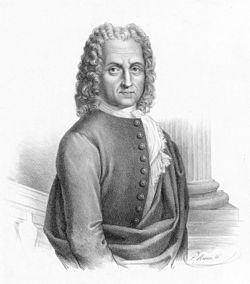 1686) in Venice. Born into a noble family, he was the younger brother of Alessandro Marcello, also a composer (read more here about the brothers). Benedetto occupied major administrative positions within the Venetian bureaucracy and wasn’t considered a professional composer; he was casual in numbering and dating his compositions, so often the dates may be derived only circumstantially. Marcello wrote a considerable number of sacred works, including nine masses (one of them a Funeral mass, or Requiem). He also wrote what he called “parafrasi” (paraphrases) on 25 psalms, published around 1724-1726 under the heading of L’Estro poetico-armonico, or Poetic and harmonic inspirations. Here is Psalm X, in the performance by the ensemble Cantus Cölln, Konrad Junghänel conducting. It’s a delightful example of late Italian baroque.
1686) in Venice. Born into a noble family, he was the younger brother of Alessandro Marcello, also a composer (read more here about the brothers). Benedetto occupied major administrative positions within the Venetian bureaucracy and wasn’t considered a professional composer; he was casual in numbering and dating his compositions, so often the dates may be derived only circumstantially. Marcello wrote a considerable number of sacred works, including nine masses (one of them a Funeral mass, or Requiem). He also wrote what he called “parafrasi” (paraphrases) on 25 psalms, published around 1724-1726 under the heading of L’Estro poetico-armonico, or Poetic and harmonic inspirations. Here is Psalm X, in the performance by the ensemble Cantus Cölln, Konrad Junghänel conducting. It’s a delightful example of late Italian baroque.
Claudio Abbado would’ve been 86 this Wednesday: he was born in Milan on June 26th of 1933.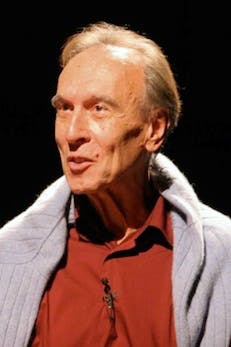 We celebrated him last year with the first movement of Mahler’s Symphony no. 4. Abbado was indeed a superb Mahlerian (he recorded his symphonies several times), but his repertory was vast (in 2013 Deutsche Grammophon released their Claudio Abbado: The Symphony Edition, which consisted of 41 CDs) and there were very few things that he hadn’t done at the highest level. Here, for example, Mozart’s Symphony no. 35 (“Haffner”), recorded in 2008. Abbado said about Mozart that he had only approached him “cautiously, once in a while,” but his interpretation of the symphony is brilliant. In this recording Abbado conducts Orchestra Mozart, Bologna, which he helped to found in 2004; that was after he was diagnosed with stomach cancer and had to leave the Berlin Philharmonic. Abbado served as the artistic director of the orchestra for many years. This is a live recording made in 2008.Permalink
We celebrated him last year with the first movement of Mahler’s Symphony no. 4. Abbado was indeed a superb Mahlerian (he recorded his symphonies several times), but his repertory was vast (in 2013 Deutsche Grammophon released their Claudio Abbado: The Symphony Edition, which consisted of 41 CDs) and there were very few things that he hadn’t done at the highest level. Here, for example, Mozart’s Symphony no. 35 (“Haffner”), recorded in 2008. Abbado said about Mozart that he had only approached him “cautiously, once in a while,” but his interpretation of the symphony is brilliant. In this recording Abbado conducts Orchestra Mozart, Bologna, which he helped to found in 2004; that was after he was diagnosed with stomach cancer and had to leave the Berlin Philharmonic. Abbado served as the artistic director of the orchestra for many years. This is a live recording made in 2008.Permalink
June 17, 2019. Gounod, Stavinsky and more. Charles Gounod was born on this day in 1818. Last year we celebrated his 200th birthday, so this time we’ll skip his anniversary. We’ll also skip Stravinsky who is linked with Gounod the same unfortunate way Tchaikovsky is with Brahms: both were born on June 17th, in 1882. Stravinsky is one of the most significant composers of the 20th century, and we write about him practically every year (see for example, here). Of Johann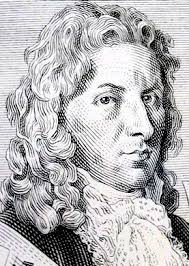 Stamitz we do not. Stamitz, a German composer of Czech descent, and a leading figure of the Mannheim School, was born on June 19th of 1717. He lived during that musically uncompelling period when Baroque was more or less over but Classical had not yet developed. Historically, his birthday follows that of Bach’s two older sons: Wilhelm Friedemann was born on November 22nd of 1710 and Carl Philipp Emanuel – on March 8, 1714. Not that they weren’t talented, all three clearly were; it just seems that there are times that are more fecund or just luckier, and others that aren’t. Gluck was also born in 1714, but Gluck doesn’t seem to belong to any period. Here’s one of Stamitz’s last symphonies, op.11 no. 3 in E flat Major, composed in 1754 or 1755 (Stamitz died on March 27th of 1757). It’s nice, dynamics are vivid, it requires a virtuosic orchestra to play (the Mannheim court orchestra was one of the finest in Europe). But listen to Haydn’s early symphony, Le Matin, no. 6, composed in 1761 – we’re in a different world! It’s so much more sophisticated, melodically, tonally, the way it develops, and just as a whole compelling piece of music, it’s hard to compare them. Of course, it’s a matter of talent, but also of that something undefinable, something in the air, the esthetics that have congealed in a short period and allowed the geniuses of Haydn and Mozart to flourish. The Stamitz is performed by the New Zealand Chamber Orchestra under the direction of Donald Armstrong; the Haydn – by the Academy of Ancient Music, Christopher Hogwood conducting.
Stamitz we do not. Stamitz, a German composer of Czech descent, and a leading figure of the Mannheim School, was born on June 19th of 1717. He lived during that musically uncompelling period when Baroque was more or less over but Classical had not yet developed. Historically, his birthday follows that of Bach’s two older sons: Wilhelm Friedemann was born on November 22nd of 1710 and Carl Philipp Emanuel – on March 8, 1714. Not that they weren’t talented, all three clearly were; it just seems that there are times that are more fecund or just luckier, and others that aren’t. Gluck was also born in 1714, but Gluck doesn’t seem to belong to any period. Here’s one of Stamitz’s last symphonies, op.11 no. 3 in E flat Major, composed in 1754 or 1755 (Stamitz died on March 27th of 1757). It’s nice, dynamics are vivid, it requires a virtuosic orchestra to play (the Mannheim court orchestra was one of the finest in Europe). But listen to Haydn’s early symphony, Le Matin, no. 6, composed in 1761 – we’re in a different world! It’s so much more sophisticated, melodically, tonally, the way it develops, and just as a whole compelling piece of music, it’s hard to compare them. Of course, it’s a matter of talent, but also of that something undefinable, something in the air, the esthetics that have congealed in a short period and allowed the geniuses of Haydn and Mozart to flourish. The Stamitz is performed by the New Zealand Chamber Orchestra under the direction of Donald Armstrong; the Haydn – by the Academy of Ancient Music, Christopher Hogwood conducting.
A very interesting conductor, now mostly forgotten, Hermann Scherchen was born on June 21st of 1891 in Berlin. He’s known as a pioneer of 20th century music; his recordings of Schoenberg, Berg, Webern and composers of the younger generation, such as Xenakis and Nono are highly valued. In 1911 Scherchen helped Schoenberg with the staging of Pierrot lunaire and went on to perform it in several German cities in his conducting debut. During WWI he happened to be in Riga, conducting the local symphony orchestra and was detained by the Russian forces. Returning to Berlin after the end of the war, he founded several ensembles and a journal, Melos. In 1922 he followed Wilhelm Furtwängler as the director ofthe Frankfurt Museumskonzerte (Frankfurt Museum Society, whose orchestra was one of the best in Germany). The German Wiki writes: “the museum entrusted its concerts to the young conductor Hermann Scherchen , a brilliant musician who, however, disturbed the audience with his commitment to the still unfamiliar New Music of Arnold Schönberg , Igor Stravinsky and Paul Hindemith.” We love the “disturbed” part. Scherchen continued disturbing audiences throughout much of his career: he premiered parts of Wozzeck in 1924, after WWII conducted master classes in Darmstadt and in 1951 was the first to presents excerpts from Scoenberg’s opera Moses und Aron. He also had a broad classical repertoire; his orchestral transcription of Bach's Art of Fugue became well-known. Scherchen opposed the Nazis and left Germany soon after the Nazis came to power, in 1933. He had an energetic private life and, as the English Wiki states “He died in Florence [on June 12th of 1966], survived by a number of children, from five wives and other women.” Here’s the Finale, Adagio. Sehr langsam und noch zurückhaltend of Mahler’s Symphony no. 9. Hermann Scherchen conducts the Vienna Symphony Orchestra (1950).Permalink
June 10, 2019. Richard Strauss. Last week we wrote about George Szell, the famous German conductor. This week we celebrate the birthday of his friend and mentor, the German composer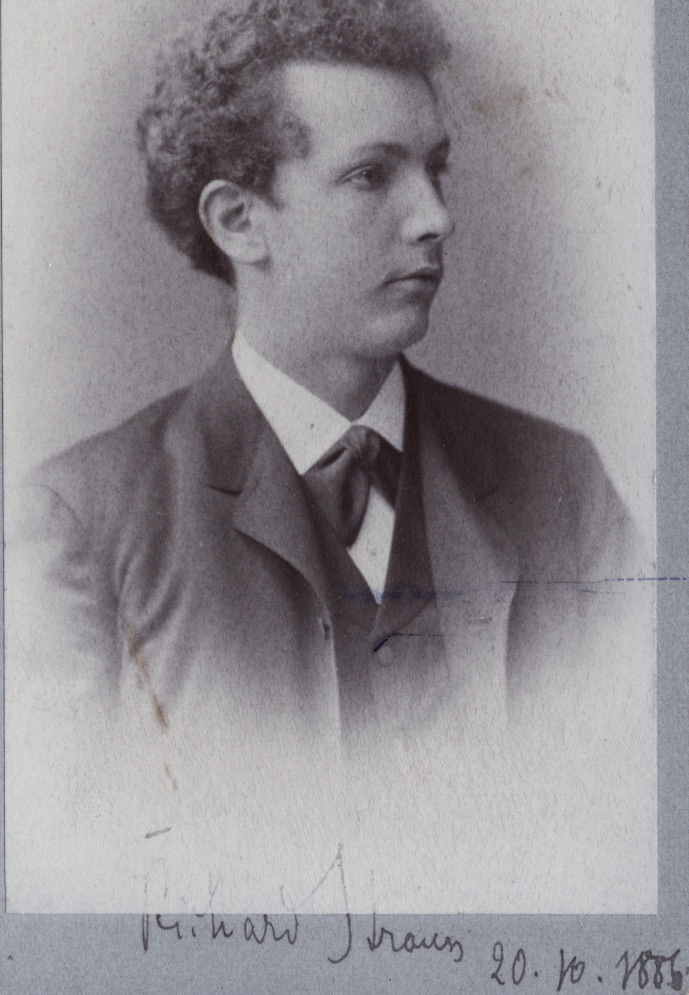 Richard Strauss. Strauss was born on June 11th of 1864 in Munich. Strauss lived a long live and was productive for an extraordinary long time, more than 70 years: his earliest “serious” compositions date from 1877 (just to put it into perspective, Brahms’s Fourth Symphony was premiered in 1884); his Four Last Songs were composed in 1948, when Strauss was 84; by then, Stravinsky and Schoenberg were part of the musical mainstream. Strauss’s father was a virtuoso horn player, the principal horn at the Munich Hofoper; his mother, née Pschorr was from the family of famous Bavarian brewers (Hacker-Pschorr, which belongs for the Pschorr family, is known worldwide for its Oktoberfest beer). Strauss’s father, conservative in his musical tastes, didn’t like either Wagner or Brahms and didn’t want his son, who was completely taken by Lohengrin and Tannhäuser after hearing them at the very opera house where his father was working, to study Wagner scores. That didn’t prevent Wagner’s music from becoming a major influence in Strauss’s life.
Richard Strauss. Strauss was born on June 11th of 1864 in Munich. Strauss lived a long live and was productive for an extraordinary long time, more than 70 years: his earliest “serious” compositions date from 1877 (just to put it into perspective, Brahms’s Fourth Symphony was premiered in 1884); his Four Last Songs were composed in 1948, when Strauss was 84; by then, Stravinsky and Schoenberg were part of the musical mainstream. Strauss’s father was a virtuoso horn player, the principal horn at the Munich Hofoper; his mother, née Pschorr was from the family of famous Bavarian brewers (Hacker-Pschorr, which belongs for the Pschorr family, is known worldwide for its Oktoberfest beer). Strauss’s father, conservative in his musical tastes, didn’t like either Wagner or Brahms and didn’t want his son, who was completely taken by Lohengrin and Tannhäuser after hearing them at the very opera house where his father was working, to study Wagner scores. That didn’t prevent Wagner’s music from becoming a major influence in Strauss’s life.
Another influence was the famous pianist and conductor Hans von Bülow (Bülow, a student of Liszt, was a major proponent of the music of Wagner and Brahms; he married Liszt’s daughter Cosima, who later left him for Wagner). Bülow met Strauss, then 19, in 1883 in Berlin; Bülow was then the conductor of the Meiningen Court Orchestra, which under his direction became one of the best orchestras in Europe. Eventually Bülow brought Strauss to Meiningen as his assistant; he also premiered some of the young composer’s music. During that period Strauss wrote several “tone poems,” which became very popular, especially Don Juan, composed in 1888, and Tod und Verklärung (Death and Transfiguration), written a year later. Here’s Death and Transfiguration, performed by the Zurich Tonhalle Orchestra under the direction of David Zinman.
In 1894 Strauss was appointed Kapellmeister in Munich, a very significant position. Soon after, feeling more confident in his future, he proposed to the soprano the Pauline de Ahna; they married later that year. His popularity growing, Strauss was receiving invitations from major musical venues: from Bayreuth to conduct Tannhäuser, the opera which affected him so much in his youth to; Berlin to conduct the Philharmonic orchestra; and from many European countries. In 1898 he was offered a conducting position at the Berlin Hofoper (now, The Berlin State Opera), the most important opera house in Germany, and he left for Berlin. In his first season there he conducted 25 operas, including the complete Ring cycle. In Berlin his activities extended well beyond conducting and composing: Strauss helped establish the society protecting the copyrights of German composers; he was elected President of Allgemeiner Deutscher Musikverein, the German music association; he also took over the orchestra of the Tonkünstlerverband, another German professional music organization and toured with it in Europe. Very much like Mahler, he was too busy to compose during the musical seasons and did it mostly during the summers. Mahler found refuge in several spots in Austria: from 1893 to 1896 in Steinbach on the Atter See in Upper Austria, then, briefly in Bad Aussee, from 1901 to 1907 in Maiernigg on the Worther See in Carinthia, and for the last three summers of his life – in Toblach in Tyrol. Strauss’s life was more organized: from 1890 to 1908 he spent every summer in a mountain villa of Pauline's parents in Marquartstein, Bavaria. This is where he turned to opera, opening another chapter of his creative life.Permalink
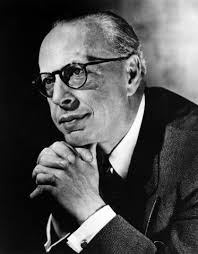 Last year we also mentioned that the great Russian conductor Yevgeny Mravinsky was born that week. He’s not the only conductor to be celebrated: George Szell and Klaus Tennstedt were also born around this date. George Szell was the oldest of the three: he was born in Budapest on June 7th of 1897 into a Jewish family; when he was six, the family converted to Catholicism before moving to the antisemitic Vienna. Szell was a child prodigy – not as conductor, of course, but as a pianist and budding composer. At the age of 11 he was giving concerts all over Europe. Even so, his interest was clearly in conducting, not the piano. At the age of 16 he filled in for an ailing conductor at a concert of the Vienna Symphony, and his conducting career was launched. He found positions at the German opera in Prague, and, at the age of 18, with Berlin's Royal Court Opera (now, Staatsoper). In Berlin Szell met Richard Strauss who was very impressed with the young man’s musical talents. In the following years Szell conducted many orchestras in Europe; in 1930 he made his American debut. Szell moved to the US at the outbreak of WWII. He settled in New York, taught at the Mannes school and frequently conducted different orchestras, including the Boston Symphony and the Metropolitan. In 1946 he was invited to the Cleveland Orchestra, then a good but second-tier ensemble. He stayed there as the music director for the following 24 years, building it into a world-class orchestra. The Cleveland made scores of recordings under Szell, many of them of the German Classical and Romantic repertoire. Szell was an autocrat, a difficult person and a perfectionist. When he left the Cleveland, the orchestra was at its best; it never achieved the same level with the excellent conductors that followed Szell – Lorin Maazel, Christoph von Dohnányi and Franz Welser-Möst. Szell died several months after relinquishing his position, on July 30the of 1970. Here Szell conducts his friend Richard Strauss’s tone poem Till Eulenspiegels lustige Streiche (Till Eulenspiegel's Merry Pranks).
Last year we also mentioned that the great Russian conductor Yevgeny Mravinsky was born that week. He’s not the only conductor to be celebrated: George Szell and Klaus Tennstedt were also born around this date. George Szell was the oldest of the three: he was born in Budapest on June 7th of 1897 into a Jewish family; when he was six, the family converted to Catholicism before moving to the antisemitic Vienna. Szell was a child prodigy – not as conductor, of course, but as a pianist and budding composer. At the age of 11 he was giving concerts all over Europe. Even so, his interest was clearly in conducting, not the piano. At the age of 16 he filled in for an ailing conductor at a concert of the Vienna Symphony, and his conducting career was launched. He found positions at the German opera in Prague, and, at the age of 18, with Berlin's Royal Court Opera (now, Staatsoper). In Berlin Szell met Richard Strauss who was very impressed with the young man’s musical talents. In the following years Szell conducted many orchestras in Europe; in 1930 he made his American debut. Szell moved to the US at the outbreak of WWII. He settled in New York, taught at the Mannes school and frequently conducted different orchestras, including the Boston Symphony and the Metropolitan. In 1946 he was invited to the Cleveland Orchestra, then a good but second-tier ensemble. He stayed there as the music director for the following 24 years, building it into a world-class orchestra. The Cleveland made scores of recordings under Szell, many of them of the German Classical and Romantic repertoire. Szell was an autocrat, a difficult person and a perfectionist. When he left the Cleveland, the orchestra was at its best; it never achieved the same level with the excellent conductors that followed Szell – Lorin Maazel, Christoph von Dohnányi and Franz Welser-Möst. Szell died several months after relinquishing his position, on July 30the of 1970. Here Szell conducts his friend Richard Strauss’s tone poem Till Eulenspiegels lustige Streiche (Till Eulenspiegel's Merry Pranks).
June 3, 2018. Schumann and more. This week a year ago we celebrated Robert Schumann and Martha Argerich, here. Schumann of course is one of the greatest Romantic composers, while Argerich – one of the most popular pianists of her generation. We love Schumann (no surprise there) but are somewhat more circumspect about Argerich, though we’re happy to admit that some of her interpretations, for example of Prokofiev’s Third Piano Concerto, are superb. (Martha Argerich was 26 when she recorded this concerto in 1967, here; in 2009 another female pianist, who was then 22, performed the same concerto with the same conductor, Claudio Abbado, and took exactly the same 27 minutes, give or take a couple of seconds, to dispatch the Prokofiev. The name of the younger pianist is Yuja Wang; her live recording, unfortunately technically of lower quality, is here, for you to compare).
Yevgeny Mravinsky was six years younger than Szell: he was born on June 4th of 1903 in St.-Petersburg. If we associate Szell with the Cleveland Orchestra, Mravinsky will be forever%20by%20Lev%20Russov.jpg) connected with the Leningrad Philharmonic. Mravinsky started his studies in biology but then entered the conservatory, majoring in composition and conducting (his teacher was the noted conductor Alexander Gauk). His first conducting position was at the Leningrad Academic Opera and Ballet Theatre (now the Mariinsky). He became a guest conductor at the Leningrad Philharmonic in 1934 and conductor in 1938. Under Mravinsky, the Leningrad Philharmonic became the best orchestra in the Soviet Union. His recordings of Tchaikovsky and Shostakovich were especially noteworthy. He premiered six symphonies of Shostakovich: nos. 5 (in 1937), 6, 8, 9, 10 and 12, in 1961. Mravinsky was known for his intensity, lack of sentimentality and the fast tempos of his performances; in this respect he reminds us of Toscanini. He led the orchestra for the rest of his life; Mravinsky died on January 19th of 1988. Here are the last three movements, Allegro Non Troppo, Largo and Allegretto of Shostakovich’s Symphony no 8, dedicated to Mravinsky.Permalink
connected with the Leningrad Philharmonic. Mravinsky started his studies in biology but then entered the conservatory, majoring in composition and conducting (his teacher was the noted conductor Alexander Gauk). His first conducting position was at the Leningrad Academic Opera and Ballet Theatre (now the Mariinsky). He became a guest conductor at the Leningrad Philharmonic in 1934 and conductor in 1938. Under Mravinsky, the Leningrad Philharmonic became the best orchestra in the Soviet Union. His recordings of Tchaikovsky and Shostakovich were especially noteworthy. He premiered six symphonies of Shostakovich: nos. 5 (in 1937), 6, 8, 9, 10 and 12, in 1961. Mravinsky was known for his intensity, lack of sentimentality and the fast tempos of his performances; in this respect he reminds us of Toscanini. He led the orchestra for the rest of his life; Mravinsky died on January 19th of 1988. Here are the last three movements, Allegro Non Troppo, Largo and Allegretto of Shostakovich’s Symphony no 8, dedicated to Mravinsky.Permalink
May 27, 2019. An “unknown” Italian. Well, we know that Marin Marais was born this week (on May 31st of 1656), but despite the popularity brought by the film Tous les matins du monde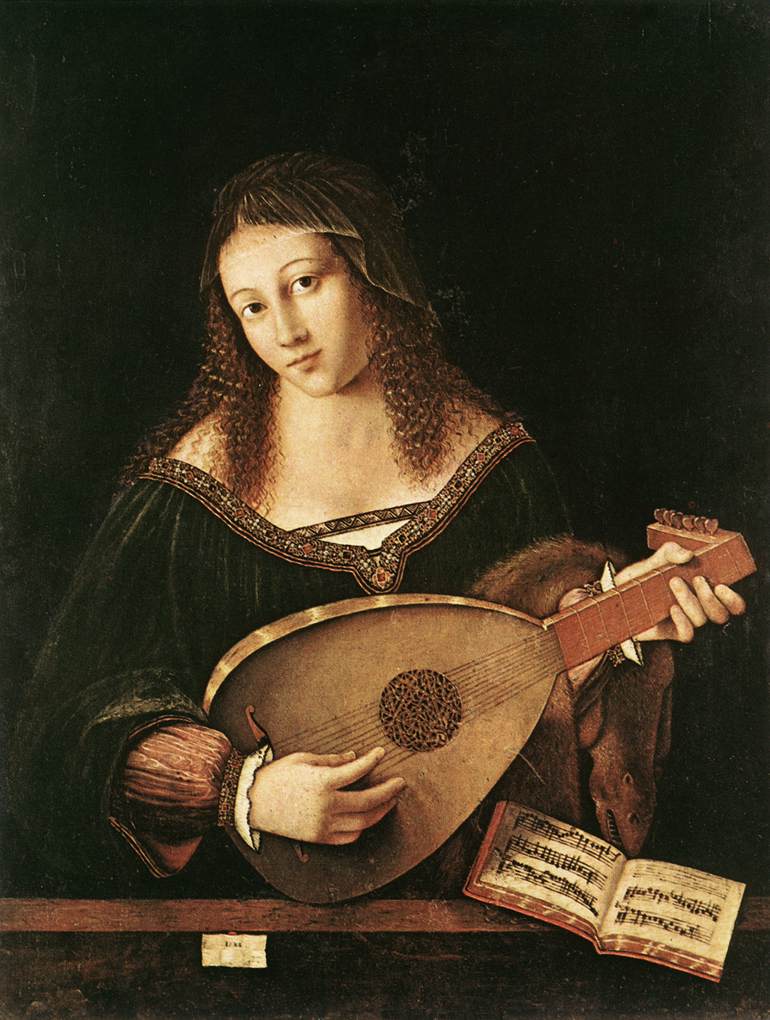 we find his music repetitive and not very interesting. If somebody disagrees, please send us a reference to a good piece. We’re not big fans of Sir Edward Elgar either (he was born on June 2nd of 1857) and will postpone, yet again, a more elaborate entry on this popular British composer. Erich Wolfgang Korngold, born on May 29th of 1897, started brilliantly, and in his early years was considered the greatest child prodigy since Mozart. He did write several pieces that remain in the contemporary repertoire, the Violin concerto being probably the best known (and the most interesting) but his life was changed by the rise of the Nazis; he moved to the US and became a Hollywood composer. His film scores were wonderful but not in the same league as what his youthful talent had promised. Then there was Mikhail Glinka (born on June 1st of 1804): he was extremely important as one of the founders of the Russian musical tradition, but it’s hard to compare his relatively minor talent with that of several composer born within a decade surrounding his birth: Berlioz, Mendelssohn, Chopin, Schumann, Liszt and Wagner. We love the music of Isaac Albéniz, but we’ve written about him numerous times. And then there are two interesting pianists, Grigory Ginzburg and Zoltán Kocsis, but we did already mention them last year. All composers that we cited above are very well known. This is not the case with Giovanni de Macque. Not only do we not know his date of birth, even the spelling of his name is inconsistent: some spell it as Giovanni de Maque, or even Jean de Macque, in a Frenchified manner. Macque was born in Valenciennes, a Flemish town now in France, sometime between 1548 and 1550 (Valenciennes is about 20 miles from Mons, where Gilles Binchois and Orlando Lasso were born). As a boy he sung in Vienna, and later moved to Rome; he lived in Italy for the rest of his life. In Rome he met Luca Marenzio; some of Macque’s madrigals show Marenzio’s influence (here is Macque’s madrigal Cantan gl'augelli, performed by the Gesualdo Consort Amsterdam under the direction of Henry van de Kamp). For a while Macque worked as the organist at the church of San Luigi dei Francesi; he was a founding member of the Compagnia dei Musici di Roma. In 1585 he moved to Naples where he was employed in the household of Prince Carlo Gesualdo. It seems that Macque left the Gesualdo employ before the prince murdered his wife and her lover. Macque had a successful career in Naples, eventually reaching the position of maestro di cappella of the Spanish Viceroy. Gesualdo, to whom Macque dedicated several works, influenced his harpsichord compositions. Here are three short keyboard pieces by Giovanni de Macque: Gagliarda Prima, and Gagliarda Seconda. Rinaldo Alessandrini plays a 1678 Franciscus Debbonis harpsichord.
we find his music repetitive and not very interesting. If somebody disagrees, please send us a reference to a good piece. We’re not big fans of Sir Edward Elgar either (he was born on June 2nd of 1857) and will postpone, yet again, a more elaborate entry on this popular British composer. Erich Wolfgang Korngold, born on May 29th of 1897, started brilliantly, and in his early years was considered the greatest child prodigy since Mozart. He did write several pieces that remain in the contemporary repertoire, the Violin concerto being probably the best known (and the most interesting) but his life was changed by the rise of the Nazis; he moved to the US and became a Hollywood composer. His film scores were wonderful but not in the same league as what his youthful talent had promised. Then there was Mikhail Glinka (born on June 1st of 1804): he was extremely important as one of the founders of the Russian musical tradition, but it’s hard to compare his relatively minor talent with that of several composer born within a decade surrounding his birth: Berlioz, Mendelssohn, Chopin, Schumann, Liszt and Wagner. We love the music of Isaac Albéniz, but we’ve written about him numerous times. And then there are two interesting pianists, Grigory Ginzburg and Zoltán Kocsis, but we did already mention them last year. All composers that we cited above are very well known. This is not the case with Giovanni de Macque. Not only do we not know his date of birth, even the spelling of his name is inconsistent: some spell it as Giovanni de Maque, or even Jean de Macque, in a Frenchified manner. Macque was born in Valenciennes, a Flemish town now in France, sometime between 1548 and 1550 (Valenciennes is about 20 miles from Mons, where Gilles Binchois and Orlando Lasso were born). As a boy he sung in Vienna, and later moved to Rome; he lived in Italy for the rest of his life. In Rome he met Luca Marenzio; some of Macque’s madrigals show Marenzio’s influence (here is Macque’s madrigal Cantan gl'augelli, performed by the Gesualdo Consort Amsterdam under the direction of Henry van de Kamp). For a while Macque worked as the organist at the church of San Luigi dei Francesi; he was a founding member of the Compagnia dei Musici di Roma. In 1585 he moved to Naples where he was employed in the household of Prince Carlo Gesualdo. It seems that Macque left the Gesualdo employ before the prince murdered his wife and her lover. Macque had a successful career in Naples, eventually reaching the position of maestro di cappella of the Spanish Viceroy. Gesualdo, to whom Macque dedicated several works, influenced his harpsichord compositions. Here are three short keyboard pieces by Giovanni de Macque: Gagliarda Prima, and Gagliarda Seconda. Rinaldo Alessandrini plays a 1678 Franciscus Debbonis harpsichord.
Permalink